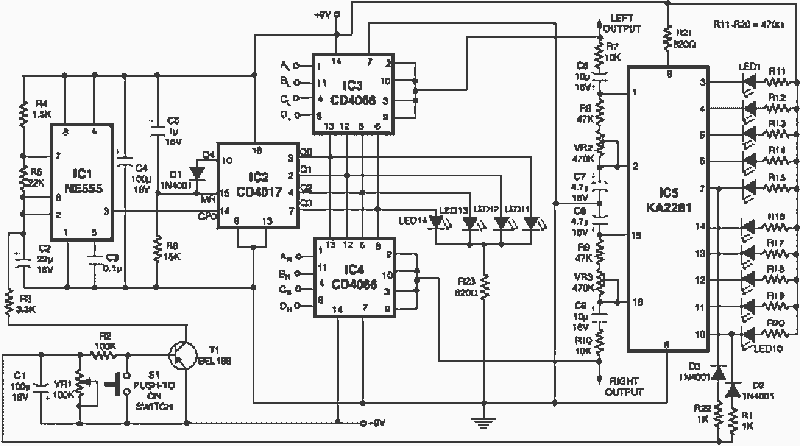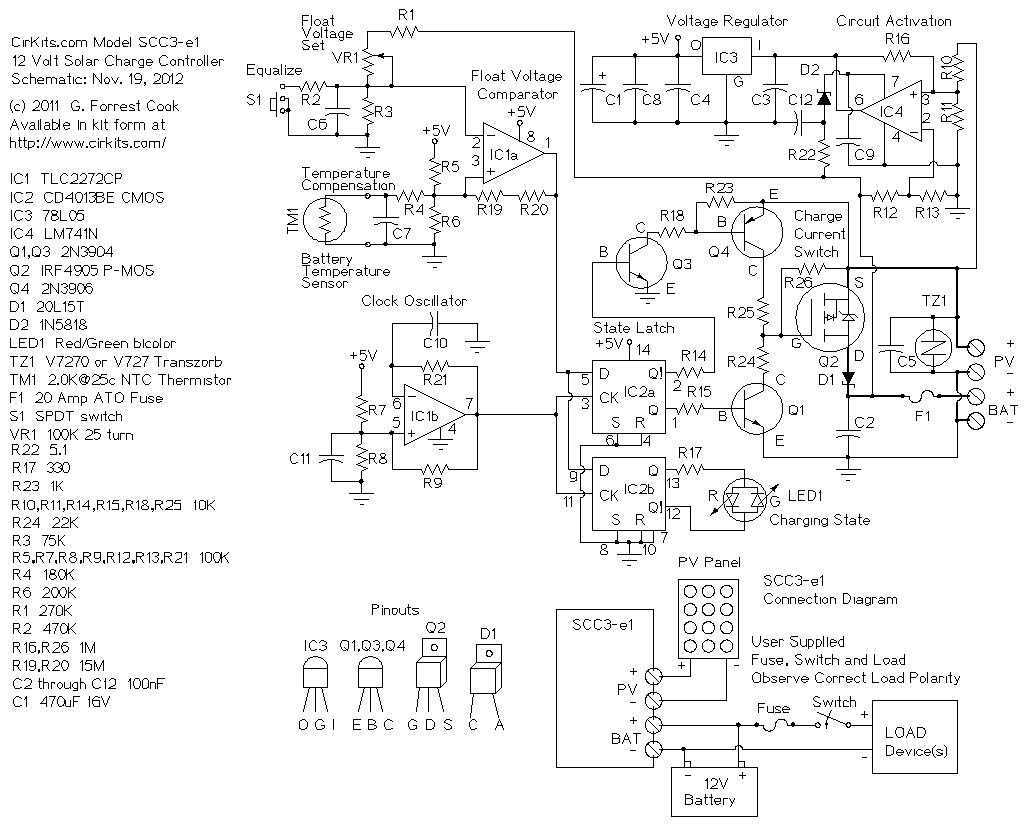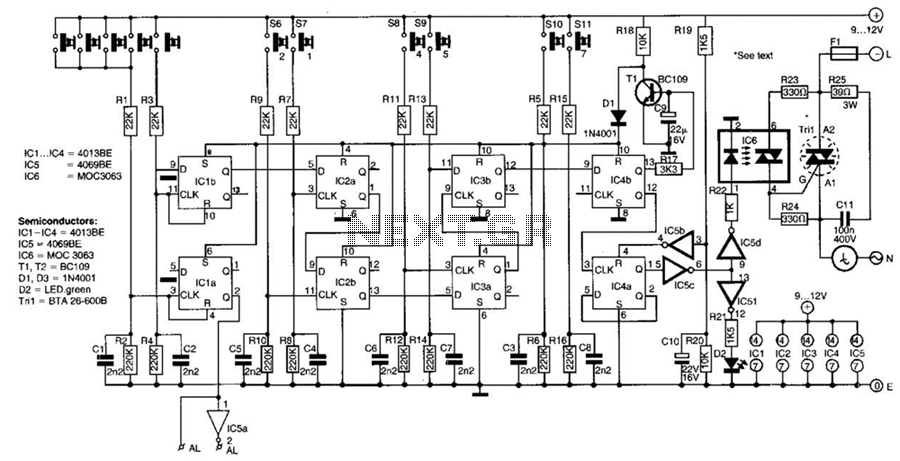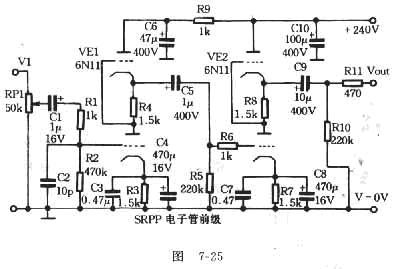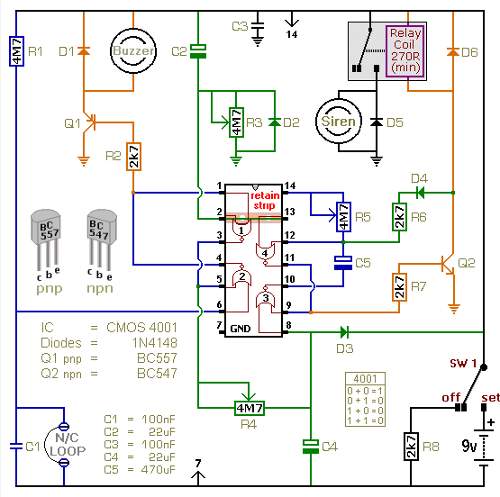
solid state power controller
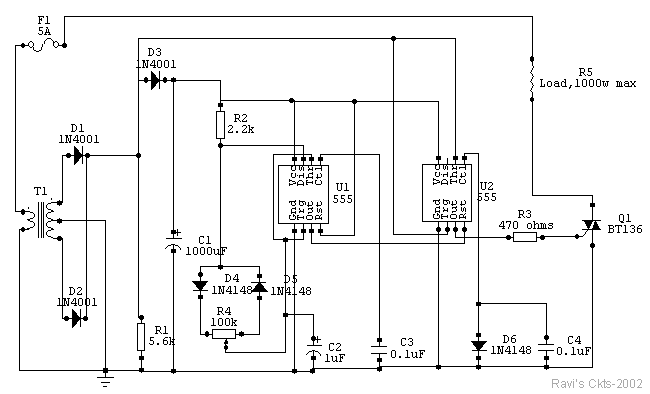
The circuit is constructed using two 555 timer integrated circuits, designated as U1 and U2. U1 is configured as a variable duty cycle oscillator with a fixed time period of approximately 0.1 seconds. The duty cycle can be adjusted between 0 and 100 percent using the R4 potentiometer. The output from U1 (pin 3) is linked to the reset input (pin 4) of U2.
The circuit utilizes two 555 timer ICs, which are versatile components commonly employed in timing applications. U1 operates in astable mode, generating a square wave output. The frequency and duty cycle of this output are determined by the resistors and capacitors connected to the timer. In this configuration, the R4 potentiometer allows for real-time adjustments to the duty cycle, providing flexibility in the signal output.
The output from U1, which is a square wave signal, is fed into pin 4 of U2, serving as a reset input. This connection allows U2 to be triggered by the output of U1, enabling it to perform additional timing or control functions based on the modified duty cycle. The reset function of U2 can be utilized to synchronize its operation with the oscillations generated by U1, resulting in a compound functionality that can be applied in various electronic applications such as pulse width modulation, frequency modulation, or as part of a larger control system.
The overall design of this circuit allows for a wide range of applications, including LED dimming, motor speed control, and other scenarios where variable timing and control are essential. Proper component selection for the resistors and capacitors in conjunction with the 555 timers will ensure stable operation and desired performance characteristics.The ckt is built around two 555 timer ICs. U1 and U2. U1 is wired as a variable duty cycle oscillator with a constant time period of around 0.1 second. Duty cycle can be varied from 0 to 100 per cent by R4 potentiometer. The output of U1 (pin 3) is connected to the rest input (pin 4) of U2.. 🔗 External reference
The circuit utilizes two 555 timer ICs, which are versatile components commonly employed in timing applications. U1 operates in astable mode, generating a square wave output. The frequency and duty cycle of this output are determined by the resistors and capacitors connected to the timer. In this configuration, the R4 potentiometer allows for real-time adjustments to the duty cycle, providing flexibility in the signal output.
The output from U1, which is a square wave signal, is fed into pin 4 of U2, serving as a reset input. This connection allows U2 to be triggered by the output of U1, enabling it to perform additional timing or control functions based on the modified duty cycle. The reset function of U2 can be utilized to synchronize its operation with the oscillations generated by U1, resulting in a compound functionality that can be applied in various electronic applications such as pulse width modulation, frequency modulation, or as part of a larger control system.
The overall design of this circuit allows for a wide range of applications, including LED dimming, motor speed control, and other scenarios where variable timing and control are essential. Proper component selection for the resistors and capacitors in conjunction with the 555 timers will ensure stable operation and desired performance characteristics.The ckt is built around two 555 timer ICs. U1 and U2. U1 is wired as a variable duty cycle oscillator with a constant time period of around 0.1 second. Duty cycle can be varied from 0 to 100 per cent by R4 potentiometer. The output of U1 (pin 3) is connected to the rest input (pin 4) of U2.. 🔗 External reference
